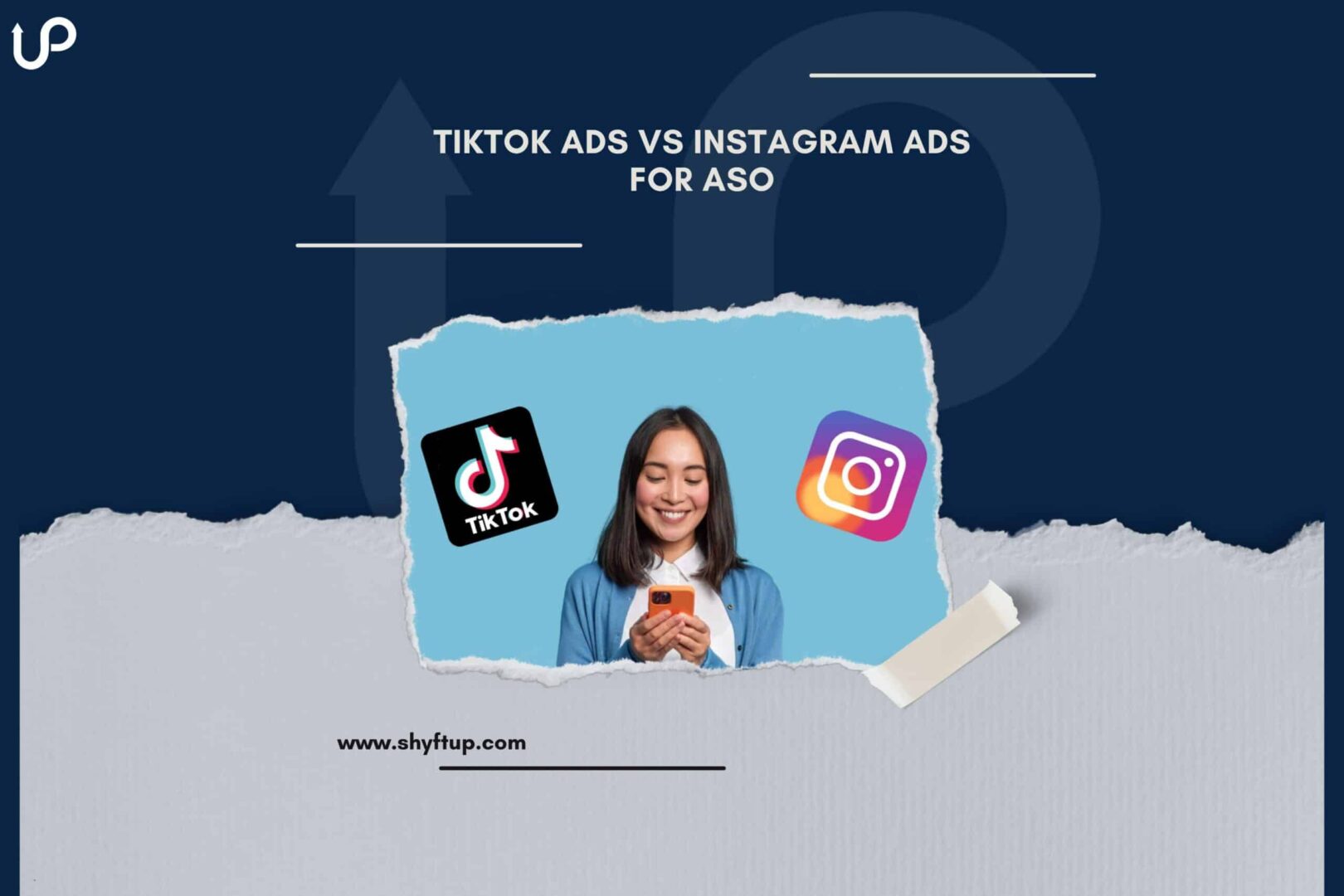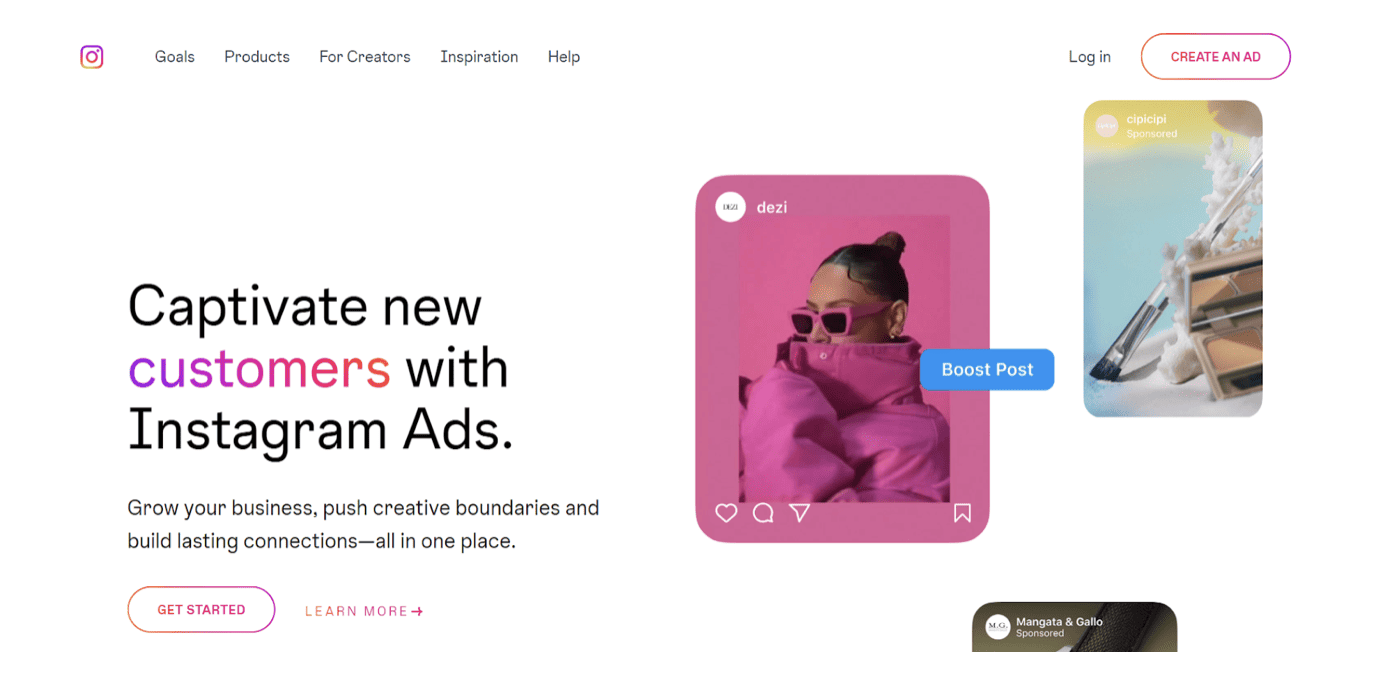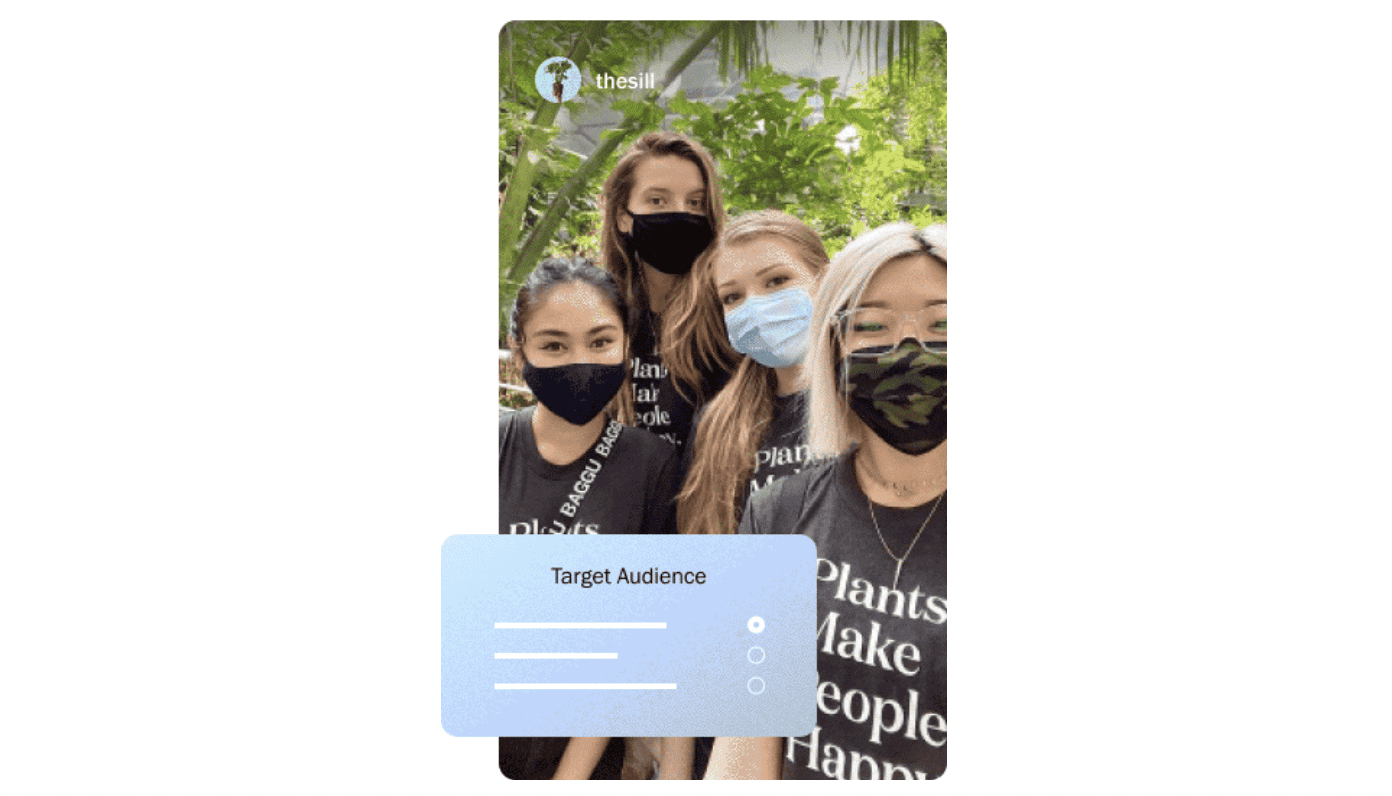
If you’re seeking to enhance your App Store Optimization (ASO) efforts, turning to paid ads becomes essential. Among the multitude of options available, TikTok Ads and Instagram Ads emerge as standout choices. Each offers its own set of benefits, making it challenging to determine the best fit for your ASO strategy.
If you find yourself indecisive, you’re not alone. Selecting between these two prominent advertising platforms isn’t straightforward, especially when you aim to capitalize on the business opportunities they present. While opting for both may be feasible with the right budget, if you’re constrained to choose just one, it’s imperative to carefully assess your options.
In this post, we’ll delve into the features, advantages, and drawbacks of both TikTok Ads and Instagram Ads. By examining these factors, you can make a well-informed decision that aligns with your app’s objectives and maximizes its visibility and success.
What are TikTok Ads?
At its core, TikTok advertising is about storytelling. Brands or creators invest in these ads to share their narratives with a targeted audience, whether it’s to spark curiosity about their offerings or to drive sales of specific products or services.
Now, let’s break down the structure of TikTok ads into three layers:
- TikTok Ad: Think of this as the star of the show – a single advertisement designed to grab your attention. It could be a video unveiling a new product, offering a special TikTok-exclusive deal, or simply showcasing the brand’s unique personality.
- TikTok Ad Group: Just like assembling pieces of a puzzle, multiple TikTok ads come together in an ad group. Each ad contributes to the bigger picture, aligning with a common theme or objective set by the advertiser.
- TikTok Campaign: Zooming out, we have the campaign – a cohesive collection of ad groups working in harmony to achieve broader marketing goals. Whether it’s promoting a seasonal sale or building brand awareness, campaigns provide the framework for strategic storytelling on TikTok.
Let’s put this into perspective: Imagine you’re a fashion enthusiast eagerly exploring TikTok. Suddenly, you encounter a vibrant video showcasing the trendiest sneakers. This video is part of a larger ad group featuring various sneaker marketing clips, all nestled within a campaign dedicated to a summer footwear extravaganza. It’s not just about selling shoes; it’s about creating an immersive experience that resonates with TikTok’s diverse audience.
What are Instagram Ads?
Instagram ads offer a powerful avenue for businesses to amplify their presence and reach on the platform. These paid posts seamlessly blend into users’ feeds, Stories, Reels, and even the Explore page, mirroring the format of organic content.
Distinguished by a “sponsored” label, Instagram ads stand out from regular posts by providing a direct link to the advertiser’s product, website, or direct messages (DMs). This link serves as a clear indicator that the content is promotional in nature.
Essentially, Instagram Ads function as a paid social media marketing strategy, enabling businesses to showcase their offerings across the platform, particularly targeting their desired audience through Stories, feeds, and more. This sponsored content retains the authentic feel of regular posts while maximizing visibility and engagement.
Furthermore, Instagram ads leverage the extensive user data collected by Facebook (Instagram’s parent company), facilitating precise audience targeting. Whether through captivating images, engaging videos, or compelling copy, these ads aim to entice users and drive action, ultimately offering businesses a valuable marketing edge on the platform.
TikTok Ads vs Instagram Ads: Which One is Best for App Promotion?
TikTok and Instagram ads are useful for various businesses. However, in this particular instance, we want to see specifically how it could help your app.
Now, there’s really not a quick answer to this question. There are certain factors that you need to consider to ensure that you choose the right ad program. So, take a look at the following and decide which ad program is ideal for you:
Audience Demographics
When choosing whether you’ll use TikTok Ads or Instagram Ads, you need to see which one allows you to reach your target audience.
TikTok Audience Demographics:
TikTok has gained massive popularity among younger audiences, particularly Generation Z (born roughly between 1997 and 2012). Here are some key points about TikTok’s audience demographics:
- Generation Z Dominance: TikTok’s user base is predominantly composed of Generation Z users, typically aged between 16 and 24. These users are highly engaged with the platform and often dictate its trends and content.
- Global Appeal: While TikTok has a strong presence in Western markets, its appeal extends globally, with a significant user base in countries like China, India, and various Southeast Asian nations.
- Diverse Interests: Despite its youthful demographic, TikTok caters to a diverse range of interests and niches. Users create content spanning comedy, dance, DIY, cooking, fashion, education, and more. This diversity allows for targeted advertising based on specific interests.
- Short Attention Spans: TikTok’s content is typically short-form, with videos ranging from a few seconds to a minute. As such, the platform caters well to users with shorter attention spans, making it ideal for quick, engaging ads.
Instagram Audience Demographics:
Instagram boasts a broad user base that spans various age groups, making it a versatile platform for targeting diverse demographics. Here’s more detail about Instagram’s audience demographics:
- Age Diversity: In the past few years, the common belief is that TikTok has a younger audience compared to Instagram. However, recent data shows that Instagram’s major audience includes users from the 18-34 age bracket. However, Instagram still has a wider audience in terms of age since they still have a significant audience coming from older age groups, including Millennials and even some Gen X users.
- Global Reach: Much like TikTok, Instagram has a global user base. It’s widely used in Western countries, but it also enjoys popularity in regions like Asia, Europe, and Latin America.
- Varied Interests and Behaviors: Instagram users engage with a wide range of content types, including photos, videos, Stories, IGTV, and Reels. This diversity in content formats allows advertisers to tailor their campaigns to suit different user behaviors and preferences.
- Engagement Levels: Instagram users tend to be highly engaged with the platform, spending significant amounts of time scrolling through their feeds, watching Stories, and interacting with content. This high engagement presents ample opportunities for advertisers to connect with their target audience.
In summary, while TikTok is known for its youthful user base and short-form video content, Instagram offers a more diverse demographic range and a variety of content formats. Your choice between the two platforms should be based on your app’s target audience and marketing objectives.
Ad Formats
If ever you’re going to run ads, its format could dramatically affect its effectiveness. TikTok and Instagram ads offer almost the same feel and look as the ads they show. However, there are certain key differences that could be a dealbreaker for you. So, read the following to know the ad formats for each platform:
TikTok Ad Formats
- In-Feed Ads: These are native ads that appear in users’ “For You” feed as they scroll through TikTok. They blend seamlessly with organic content and can be in the form of videos, images, or GIFs. In-feed ads often include a call-to-action (CTA) button that directs users to take a specific action, such as downloading an app or visiting a website.
- Branded Hashtag Challenges: Brands create challenges around a specific hashtag and encourage TikTok users to participate by creating content related to the challenge. Branded hashtag challenges can generate significant user engagement and user-generated content (UGC), leading to increased brand visibility and app downloads.
- Branded Effects: Brands can create and sponsor AR (Augmented Reality) effects, filters, and stickers that users can apply to their videos. Branded effects allow brands to integrate their branding elements into user-generated content, increasing brand exposure and engagement.
- TopView Ads: These are full-screen video ads that appear when users open the TikTok app. TopView ads have prominent visibility and can capture users’ attention immediately. They are highly effective for brand awareness campaigns and driving app installs.
- Branded Content Ads: These ads allow brands to collaborate with TikTok influencers to create sponsored content. Influencers promote the brand or app in their videos, providing authenticity and credibility to the advertising message.
Instagram Ad Formats
- Photo Ads: Single-image ads that appear in users’ Instagram feeds. Photo ads allow brands to showcase their products or services through visually appealing images. They include a CTA button that directs users to take action, such as visiting a website or downloading an app.
- Video Ads: Similar to photo ads but with the addition of video content. Video ads on Instagram can be up to 60 seconds long and autoplay in users’ feeds. They are effective for storytelling and capturing users’ attention with engaging visuals and narratives.
- Carousel Ads: These ads allow brands to showcase multiple images or videos within a single ad unit. Users can swipe through the carousel to view different content pieces. Carousel ads are great for highlighting product features, showcasing product collections, or telling a sequential story.
- Messenger Ads: Messenger ads facilitate the initiation of conversations between individuals and your business. Forge personal connections with existing or potential customers by incorporating interactive or automated features.
- Stories Ads: Full-screen vertical ads that appear in between users’ Instagram Stories. Stories ads can include images or videos and are immersive and highly engaging. They provide a seamless ad experience within the Stories format and can drive app installs or website visits with a swipe-up CTA.
- Slideshow: Slideshow ads combine motion, sound, and text to create video-like experiences. These lightweight clips enable you to artfully narrate your story, ensuring seamless delivery across various devices and connection speeds.
- Collection: Collection ads empower individuals to explore, browse, and purchase items offered by your business. With a simple tap, users can delve deeper into a specific product, all within a fast-loading and seamless experience.
- Playables: Playable ads provide users with an interactive preview of an app before they decide to download it. This try-before-you-buy experience helps to attract users with higher intent, ensuring that those who do download the app are more likely to be engaged and satisfied with their experience.
Both TikTok and Instagram offer a wide range of ad formats to cater to different marketing objectives and audience preferences. Understanding the unique features and advantages of each ad format can help brands create effective advertising campaigns that drive app visibility and user acquisition.
Cost and ROI
Running ads aren’t free. So, you also need to take into consideration the cost that comes with TikTok and Instagram Ads. Not only that, but you need to know whether it is profitable or not by looking at the Return on Investment (ROI).
TikTok:
- Cost: TikTok ads tend to be relatively cheaper, particularly when targeting younger audiences. This is because TikTok’s advertising platform is still growing and evolving, so ad space may be less expensive compared to more established platforms like Instagram or Facebook.
- ROI Considerations:
- Engagement: TikTok’s highly engaged user base and emphasis on creativity can lead to high levels of engagement with ads, potentially resulting in a higher ROI.
- Brand Awareness: TikTok is known for its virality, so well-designed ads have the potential to reach a large audience quickly, increasing brand visibility and awareness.
- Targeting Limitations: While TikTok’s targeting options are improving, they may not be as advanced or granular as Instagram’s, potentially impacting the effectiveness of your ads in reaching the right audience.
Instagram:
- Cost: Instagram ads can be more expensive, especially for competitive industries or when targeting broader audiences. The cost per click (CPC) or cost per impression (CPM) may be higher due to the platform’s popularity and extensive user base.
- ROI Considerations:
- Advanced Targeting: Instagram offers advanced targeting options, allowing advertisers to reach specific demographics, interests, behaviors, and even retarget users based on their interactions with the app or website. This precise targeting can lead to a higher ROI by ensuring ads are shown to relevant audiences.
- Visual Appeal: Instagram is a visually focused platform, and ads seamlessly blend into users’ feeds, stories, and explore pages. High-quality visuals and compelling storytelling can enhance ad effectiveness and drive higher engagement and conversion rates.
- Competitive Landscape: The higher cost of Instagram ads may be justified by the platform’s effectiveness in driving conversions and sales, particularly in competitive industries where brand visibility and differentiation are essential.
In summary, while TikTok ads may offer lower upfront costs and potential for virality, Instagram ads provide advanced targeting options and a visually appealing platform that can lead to higher ROI, especially for brands looking to reach specific audiences or drive conversions.
Other considerations
The audience type, ad formats, and cost are among the most important factors you need to consider when running ads on TikTok and Instagram. On top of that, don’t forget to ponder upon the following as well:
Engagement and Virality:
- TikTok: TikTok is known for its virality, and well-executed ads can quickly gain traction and reach a large audience. If your app has a strong visual appeal or if you can create engaging video content, TikTok might be the platform for you.
- Instagram: Instagram has a highly engaged user base, and its ad formats seamlessly integrate with the user experience. If your app can benefit from visually appealing content and storytelling, Instagram ads can be effective.
Tracking and Analytics:
Both TikTok and Instagram offer robust analytics tools to track the performance of your ads, including metrics like impressions, clicks, app installs, and more. Make sure to analyze these metrics to optimize your ad campaigns for better results.
Who wins the TikTok Ads vs Instagram Ads for ASO debate?
In the TikTok Ads vs Instagram Ads debate for ASO, there’s no clear winner. Both platforms offer unique advantages and considerations that can impact the effectiveness of app visibility and ASO efforts.
TikTok stands out for its lower costs, potential for virality, and highly engaged younger audience. Its emphasis on creativity and the opportunity for ads to go viral quickly can lead to increased brand awareness and visibility, especially for apps targeting younger demographics or those with visually compelling content.
On the other hand, Instagram provides advanced targeting options, a visually appealing platform, and a broader user base spanning various demographics. While Instagram ads may come at a higher cost, their effectiveness in driving conversions and sales, particularly in competitive industries, cannot be overlooked. The platform’s seamless integration of ads into users’ feeds and stories, coupled with its sophisticated targeting capabilities, can result in higher ROI for app promotion campaigns.
Ultimately, the choice between TikTok and Instagram ads depends on your specific marketing objectives, target audience, budget, and creative assets. Experimentation, testing, and analyzing the performance of both platforms are essential for determining which yields the best results for your ASO efforts. By leveraging the strengths of each platform and optimizing your ad campaigns accordingly, you can maximize app visibility and drive downloads effectively.
Learn More About Running Paid Ads
If you’re interested in exploring advertising beyond TikTok and Instagram, discover the full spectrum of possibilities with ShyftUp. Our team collaborates closely with you to elevate your ad campaigns and achieve optimal results. Schedule a demo today to unlock the potential of our partnership and open new avenues for growth and visibility for your app!





